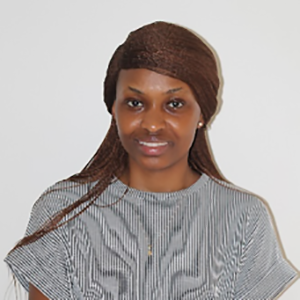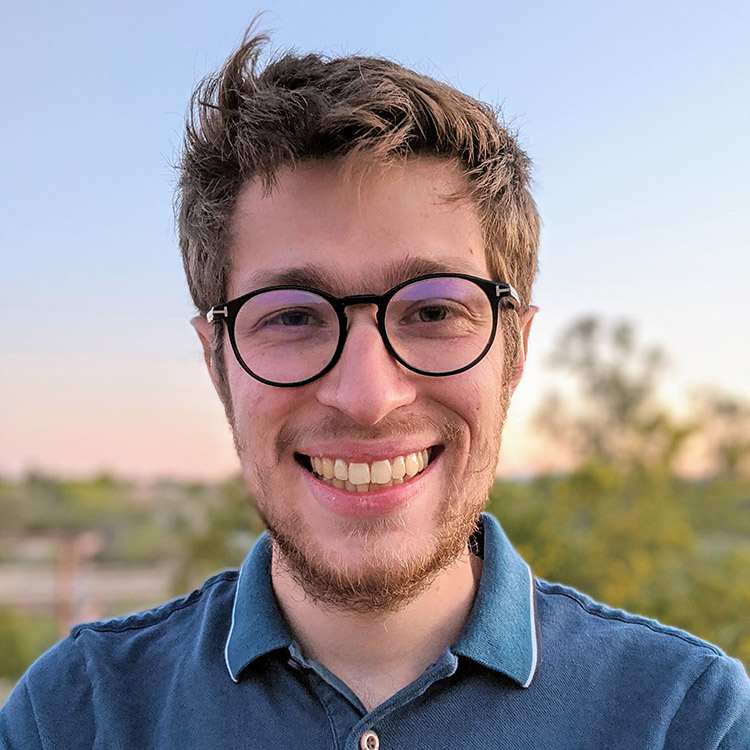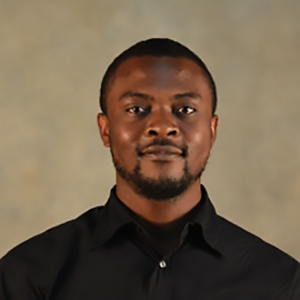
Frontera Computational Science Fellowships
2020-2021 Fellowship Awardees





Welcome to TACC’s five inaugural Frontera Computational Science Fellowship awardees for 2020-2021. The program provides a year-long opportunity for talented graduate students to compute on the most powerful academic supercomputer in the world and collaborate with experts at TACC.

Maureen Kitheka
School: State University of New York at Binghamton
Field of Research: Computational Chemistry
Why did you become a scientist?
I have always loved the sciences from a young age, and knew I wanted a career path that would enable me to have a positive impact on society. In high school, I was introduced to organic chemistry and its applications in the pharmaceutical industry. The vast applications that chemistry has made me want more knowledge on the subject. It was then that I realized that I wanted to be a chemist.
What is your favorite aspect of your research?
I’m passionate about my research. My favorite aspect is being able to explain factors that have remained elusive through experimental studies. I study the mechanism of charge storage in crystalline quinones using molecular dynamics and density functional theory-based computational methods, which cannot be explained using experimental methods only.
What excites you most about working on the Frontera supercomputer?
Frontera will enable me to investigate fundamental questions related to the mechanism of charge transport in crystalline quinones. These materials are becoming increasingly important as electrode materials in energy storage devices. An understanding of the charge transport mechanism will greatly advance this field by allowing appropriate rational design of electrodes and cells. Frontera is the fastest academic supercomputer in the world, and I’m excited to be part of this incredible team.
What do you hope to accomplish during your time as a Frontera fellow?
I hope to gain additional skills from the training I will get on the latest tools, topics, and trends in advanced computing. Moreover, I hope to build on my research experience by participating in conferences, publications, and networking with academic and industry professionals.
What do you like to do when you aren't working on research?
What tops my list is being a volunteer in the chemistry outreach program to middle school and high school students. This program aims to stimulate students in developing an interest towards different subjects that make up the STEM field. I also like learning new things; for example, I’m currently auditing a coding class using the Python programming language.

Gabriele Bozzola
School: University of Arizona
Field of Research: Physics and Astrophysics
Why did you become a scientist?
I’ve always been attracted to science and technology. I have never considered being anything but a scientist.
What is your favorite aspect of your research?
I enjoy discussing research and open-ended questions with others. However, I gain the most satisfaction from seeing my code work. Writing code is like building: you start small, and keep working to improve and expand. Sometimes, you never finish and you move on to the next project. But other times, your code keeps growing until you’ve made something beautiful and elegant. When this happens, I feel accomplished, having successfully built something useful that did not exist before.
What excites you most about working on the Frontera supercomputer?
The numerical-relativity simulations I perform require world-class supercomputers, so I have experience working on numerous large machines, including Stampede2 at TACC, Galileo and Marconi at CINECA, and Blue Waters at NCSA. While these are excellent supercomputers, my study requires building a bridge between CPU and GPU codes, and only Frontera's unique characteristics will significantly speed up the development. Frontera has unprecedented computing performances (due to the high CPU count/clock, fast memories and interconnections), and it has GPUs perfectly suited for the ray-tracing part of my project.
What do you hope to accomplish during your time as a Frontera fellow?
Our theoretical understanding of accretion disks around binary black holes is not satisfactory. We need better theoretical models to interpret present and future astronomical observations. As a Frontera fellow, I will extend existing codes to perform ray-tracing in dynamical general-relativistic simulations. This tool will provide the first accurate light-curves and spectra from accreting binary black holes up-to and after merger. At the end of my fellowship, I will publicly release my code, making my contribution available to the community. This will accelerate advancements in the discipline and will help discover accreting binary black holes.
What do you like to do when you aren't working on research?
My first hobby is cycling — I spend most Saturdays riding my bike. My goal is to climb Mt. Lemmon, the highest peak near Tucson. I also like to tinker with my computer. In particular, I take pleasure in extending an ancient piece of software, GNU Emacs, and contributing to related open-source projects.

Jeane Camelo
School: University of Central Florida
Field of Research: Coastal Engineering
Why did you become a scientist?
As a child, we had Peanuts Children Encyclopedias that had Q&As about space, animals, and most things a child would be curious about. I loved seeing the pictures in those books, and eventually learned to read what was in them — that was my first exposure to science. Growing up in the Philippines, I spent a lot of time in the water, which motivated my interest to take up coastal studies. When I went back home after receiving my master’s degree, a massive storm surge due to Typhoon Haiyan happened, and that’s how I got involved in storm surge research.
What is your favorite aspect of your research?
My favorite part of my research is modeling future climate and surge interaction scenarios. It gives you a first-hand view of what the future might look like, and at the same time, it’s fulfilling knowing that my results can help support public policy and planning. Communicating these results is a challenging but exciting task. We need interdisciplinary collaboration to be able to effectively reach our audience. As scientists, we enjoy looking at numbers, tables, and graphs, but the general public may not see what we see, no matter how good the models are.
What excites you most about working on the Frontera supercomputer?
Studying how weather forecasts and storm surge affect the uncertainty in prediction involves running several historical and synthetic storm scenarios. It’s very computational and resource intensive, and having access to the Frontera supercomputer will enable me to get results in a timely manner. Getting a forecast early is crucial to evacuation operations, and in the future, I hope that the tools I use during my time as a Fellow will help these efforts.
What do you hope to accomplish during your time as a Frontera fellow?
Ultimately, I hope that my research will contribute to improving storm surge communication and help mitigate disasters. Although I’m not a trained computational scientist, I’m very fortunate to have access to researchers through the fellowship as mentors and collaborators. I have always believed that communicating science is as important as doing the science itself, and as a Fellow, I hope to be able to present my research to a broader audience.
What do you like to do when you aren't working on research?
I like being in the water and enjoy scuba diving. Recently, I’ve started to relearn playing the piano and I box a few times a week. I’ve been trying to grow tomatoes and flowers in the yard, but the squirrels have been digging them up. I’m still hopeful I would get to have some fruit before the summer ends.

Dubem Okafor
School: University of Iowa
Field of Research: Elastoplastic wave propagation in impacting media
Why did you become a scientist?
My grandfather taught physics. He had an answer for almost any question I had as a child. He was able to explain scientific principles from action and reaction to the mechanics of the universe in simple terms that a 9-year-old could understand. Also, my father always said ‘With a good grasp of Math, almost everything will make sense to you.” They are my inspiration.
What is your favorite aspect of your research?
I enjoy the use of mathematical modeling to understand the fundamental physics governing the behavior of complex physical processes involved in various materials. Much of my research is related to numerical framework development (computations), the importance of which is due to its application. This provides better characterization of materials including metals, polymers, and energetic materials under extreme conditions. Experimental characterization of material behavior under extreme environments is very expensive and challenging. Development of a computational platform allows one to perform virtual experiments and helps to decrease those concerns.
What excites you most about working on the Frontera supercomputer?
I have been working on the University of Iowa’s HPC system (Argon) but it has its limitations. The Frontera supercomputer is a more powerful system and will make it possible to attempt a wide range of problems. I’m excited to see the improvement in accuracy of results by running an efficient code and better resolved simulations on the Frontera supercomputer.
What do you hope to accomplish during your time as a Frontera fellow?
I’m looking forward to interacting with mentors and accomplished researchers. I hope to use this opportunity as a platform to build a strong research career and also make strides towards the completion of my dissertation.
What do you like to do when you aren't working on research?
I like to watch movies with friends, play video games and board games, and play soccer.

Danat Issa
School: Northwestern University
Field of Research: Astrophysics
Why did you become a scientist?
When I was a physics Olympiad student in high school, I imagined that all the problem-solving skills I acquired would pave the way into becoming a physicist in the future. I started learning more about various physics research activities that I could participate in at my college in Kazakhstan. Having just learned the basics of programming in my junior year, I was intrigued by an opportunity to engage in computational astrophysics research, where I could combine two activities that I enjoy doing: solving open-ended physics problems and writing computer programs. I believe that you should do something you love on a daily basis to be happy.
What is your favorite aspect of your research?
There is a pioneering spirit in any scientific research that keeps you absorbed in the problem you are trying to solve. This creates a feeling of novelty that I enjoy every time I sit down to work on my projects. In addition, one of my favorite things about research are the moments when I finally figure out a solution to my problem. Last, but not least, I have an opportunity to develop a versatile skillset, which can be used outside of academia to help solve real-world problems.
What excites you most about working on the Frontera supercomputer?
When I was in college, we didn’t have access to supercomputing resources, so I had to wait until my first research internship in the U.S. to work on such machines. Now I use supercomputing resources on a daily basis. This opportunity to work on the Frontera supercomputer is unique in that I will get to work on my project and run my own simulations independently. Moreover, I’m excited to ask questions of the experts and to learn more about massively parallel computations.
What do you hope to accomplish during your time as a Frontera fellow?
I’m currently tackling a long-standing problem of what happens in the aftermath of a neutron star colliding with another neutron star, or, getting eaten by a black hole. My ultimate goal is to build a first-principle model of an aftermath of neutron star mergers and the properties of the electromagnetic emission coming from them. The observed radiation can tell us more about how much mass got spewed out, how fast this material is moving, and what elements it consists of.
During my time as a Frontera fellow, I’m going to include physical models of neutrino transport and a realistic equation of state in the code to simulate such mergers. I look forward to using Frontera as I step closer to my goal.
What do you like to do when you aren't working on research?
Having completed my coursework, I’m busy working with undergraduate students as a teaching assistant. Guiding students through complex topics in physics requires being creative with the way I approach these topics. We’re all social distancing at the moment, and I get to spend more time with my wife at our studio. I also use this time to become better at baking, which I always enjoyed, but rarely had time for.
2023-2024 Frontera Fellowship Awardees
2022-2023 Frontera Fellowship Awardees


